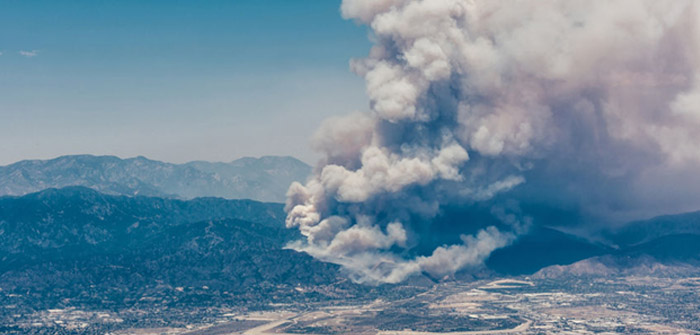Wildfire smoke contains ash, carbon dioxide, gas, fine particles from the burning trees and plants, and water vapor. People who live near forestry are especially vulnerable to the dangers of wildfires.
Besides the physical damage wildfires cause, people can become seriously ill by inhaling acetic acid, carbon monoxide, formaldehyde, and methane present in the smoke and flames. Approximately half of the nation’s wildfires originate in California.
Health Risks of Wildfire Exposure
The fine particles present in the materials described above pose the greatest threat to human health. Due to their microscopic size, people often don’t realize the wildfire particles have gotten into their eyes or became lodged in their respiratory system.
It isn’t necessary to be outdoors or physically close to wildfires to experience health problems because of them. Wildfire smoke can easily make it way through windows, doors, and cracks in the exterior of a home.
Some of the most common health issues associated with wildfire smoke inhalation include:
- Aggravation of existing health conditions like heart or lung disease
- Bronchitis
- Burning eyes
- Runny nose and other allergy-like symptoms
People who already have compromised lung capacity or heart issues are at risk of premature death due to wildfire exposure. Anyone who lives near forestry or the site of an active wildfire should take immediate steps to protect themselves by completing some home maintenance tasks to prevent the infiltration of smoke and flames.
Seal Any Leaks in Doors and Windows
When the air is thick with smoke outside, the first thing homeowners should do to protect themselves is close all doors and windows. The next step is to check each door and window for air leaks. These are sometimes visible but not always.
Holding a lighter or candle up to each door and window can help to identify air leaks when homeowners can’t see them after a visual inspection. If the flame flickers or smoke blows away from the window, it means that smoke-filled air is coming in from outside.
Homeowners can fill the air leaks of most doors and windows with caulking material. However, it’s time to call a professional window company if wildfire smoke continues to make its way inside after completing the caulking project.
Switch to HEPA Filters
The Environmental Protection Agency (EPA) recommends using a high efficiency particulate air (HEPA) filter in heating and cooling systems to improve energy efficiency and indoor air quality. Depending on the quality of the HEPA filter, the EPA claims it can trap up to 99.97 percent of wildfire particles, dust, pollen, and other pollutants to prevent people living in the home from inhaling them. If the home has a smoky smell, purchasing an air purifier with a carbon filter can help to eliminate it.
Turn on the Air Conditioner
Running a central air conditioning system helps to keep indoor air as fresh as possible if doors and windows remain shut. Homeowners without air conditioning can open windows first thing in the morning or last thing at night when the air quality index is good to push stagnant air out of their home. Closing the windows and keeping curtains shut afterwards allows cool air to circulate throughout the day.
The wildfires in California have been especially prevalent this year. These tips will keep people safe until they eventually extinguish.





